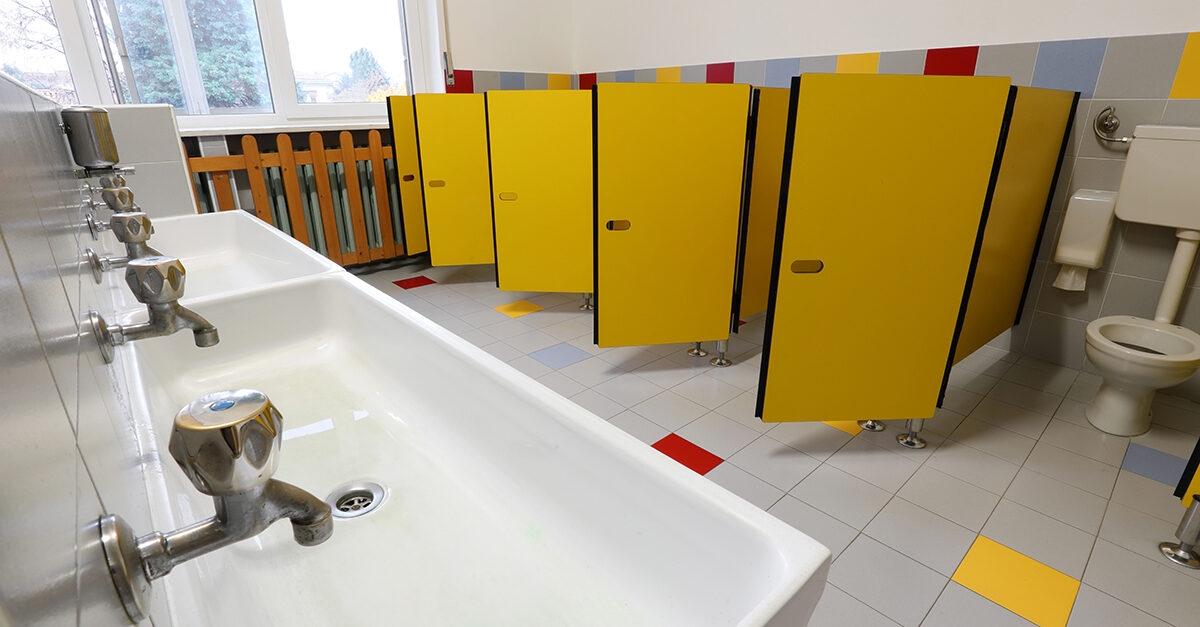Are K–12 schools clean? Based on a standardized cleanliness assessment of hundreds of schools in 2022 the answer is…kind of.
Proper cleaning in schools promotes a safe and healthy environment for children to learn. Maintaining a healthy level of cleanliness throughout the facility enhances the performance
and productivity of the students, staff, and faculty.
As of 2020, there were 130,930 recorded K–12 schools in the United States, according to the National Center for Education Statistics (NCES). However, there are few regulations or standards to
determine how schools are cleaned and staffed.
In 2022, cleaning experts with an ISSA consulting team visited and assessed the current level of health, safety, cleanliness, and operations in both public and private schools across the
country. Anyone who has ever spent time in a school knows it’s a heavily used environment, with people of all ages and backgrounds occupying building spaces daily.
The assessment turned up several common problems, including vacuums in desperate need of a filter change, custodial closets with expired and outdated products, and custodians who must multitask to complete daily tasks from raising the flag in front of the school to cleaning cafeteria seats and tables after each lunch period.
Take 10 for school cleanliness
Taking the results of the assessment into account, here are 10 improvement opportunities that can contribute to healthier and cleaner schools in 2023:
- Treat people kindly and with respect. Treating others with respect isn’t complicated and doesn’t take a huge amount of effort. Cleaning is hard work, and parts of the job can be rather unpleasant at times. Respect starts with you. Respecting each other sets a good example for others.
- Take time to assess the situation. The last thing you want to do when a cleaning emergency suddenly pops up is let it sit there unresolved. However, when you react immediately to a problem, you’re not giving yourself time to understand it. Take a moment to pause and assess the situation. If the building is not burning to the ground, chances are you have time to take a moment
to formulate a plan. - Develop a plan for staffing shortages and absenteeism. Absenteeism, whether it is due to planned vacations or unexpected illnesses, inevitably leaves schools shorthanded. A written plan for how to address these situations and prioritize tasks will ease the confusion of what to do when the inevitable happens.
- Improve hiring practices. Hiring new cleaning workers is a critical part of being a leader, and it’s more complicated than simply reviewing resumes and conducting interviews. Timeliness is the key factor to improve the volume you will need in 2023. Most people that are seeking work in the cleaning industry are likely to choose a different employer if the process takes too
long. With the right hiring and onboarding process in place, you can recruit and hire the best candidates. - Utilize integrated cleaning systems. Cleaning isn’t about pushing dirt around; it’s about removing dirt and unwanted substances from the environment. Custodians who follow improper cleaning systems (for example, disinfecting surfaces without cleaning them first) are just moving dirt from one place to the next.
- Track and improve tool cleaning and equipment maintenance. Having clean equipment is an important part of the cleaning process. Replacing vacuum filters, regularly laundering microfiber or other cleaning cloths, and cleaning out mop buckets help create cleaner schools and longer-lasting equipment.
- Reduce cross contamination. Most schools have multiple space types and uses that go beyond classrooms, such as kitchens, gyms, and restrooms. Use a color-coded system on cleaning supplies with a different color representing each space, so custodians won’t use the same cloth to clean a restroom sink, a kitchen counter, and then a desk.
- Upgrade cleaning tools to those with a better cleaning tolerance. Our assessment revealed old equipment in disrepair, ranging from broken and frayed cords and plugs to nonoperational batteries. In the new year, remove or repair anything that’s old and broken.
- Develop a tight scope of work and level of service. If your organization doesn’t havea written scope of work for which tasks get done, how often they get done, and the expected outcomes of the work, create one ASAP. Without an accurate level of service agreement, you’re setting yourself up for scope creep. Generally, scope creep occurs when new cleaning requirements are added to the custodians’ task lists without the approval of the facility manager/department. The cleaning team is then expected to complete more tasks, deliverables, and
milestones with the same amount of resources and in the same time as the original scope of work. - Arrange training and certification for custodial workers. In many schools, custodial training involves no more than a few days (or hours) of pairing up with someone to learn the job. Instead, schools need to have a comprehensive training program in place that provides hands-on training with the actual tools used in the buildings. The training should provide workers with an overall understanding of why their jobs are essential to protecting building occupants and the protocols for how and when to perform specific cleaning tasks.
Although schools are a challenging environment to keep clean, custodians’ success in this challenge is necessary to the success of the students, staff, and faculty. If your cleaning
program doesn’t generate a good outcome, it might be time for a program reset or even a full reboot in the new year.



